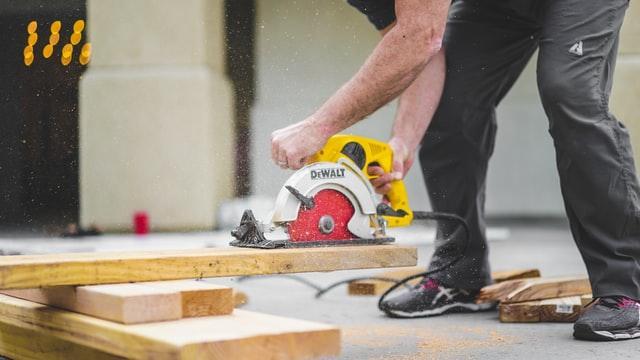Getting started on a home renovation or DIY project can be overwhelming, especially when you don’t quite know where to start. But an excellent place to begin would be to know which power tools you need for the job. While there could be a ton, starting simple tends to require just the five essential power tools depending on your project. You can visit the DIY Tools Web or read on to learn more about these items.

Power Tools for Every DIYer
While not all DIY projects require power tools, you’ll eventually need to learn how to handle them as you progress to more complex tasks. Make DIY easier by familiarizing yourself with the following electric tools:
Power Drill
The drill has rightfully earned the title of “most essential tool” in the shed because of its multipurpose quality. This essential electric tool can be helpful in almost any DIY project, from hanging pictures to doing a complete kitchen revamp. Even if a task doesn’t require any building or cutting, a power drill will likely play a part in other essential applications. For instance, you may need it to turn screws or create holes in all kinds of surfaces.
Sander
A lot of jobs may require you to use the sander. From trim work to refinishing pieces of furniture, a quality sander has what it takes to create smooth, beautiful textures. Sanders come in many different types, such as palm, belt, and orbital, each of which has its purpose. Palm is considered by many to be the most versatile and recommended for DIYers looking for only one type of sander.
Miter Saw
Here is another versatile piece of equipment that should be a staple in your toolbox. Miter saws can assist with trim work and furniture building. Sometimes, a chop or drop saw can create accurate cuts at a specific angle. Before using this tool, inspect the blade and do a cutting test to see if the saw cuts straight.
Circular Saw
Unlike a miter saw, which has high cutting accuracy, a circular saw sacrifices a bit of precision for a whole lot of portability. For some DIYers, this is more than a fair exchange. That’s because portability also adds to the versatility, a quality that most DIY beginners look for in their power tools. When choosing a circular saw, note the side of the blade where the motor sits, as these tools can be left or right-handed.
Jigsaw
DIY often calls for cutting weird shapes and curves. These tasks are a jigsaw’s forte, and using a miter or circular saw would be either impossible or not yield close to the same results.
That makes this tool perfect for flooring. Despite not being as versatile as the other saws on this list, it is still crucial for specific home installation tasks. If you’re cutting materials three-fourths to one-and-a-half inches in thickness, jigsaws are the tools for doing it correctly. They also come with detachable blades to suit the material you’re cutting.
Five Tools That Didn’t Make Our Shortlist
Here are the five power tools that just fell short of our list:
Reciprocating Saw
Large-scale demo and remodeling projects often require this tool. It’s great for quickly cutting through wood, metal, and other materials. Then again, more straightforward tools can perform these tasks equally well.
Rotary Hammer
This tool drills into concrete and uses particular parts that tap at masonry. While effective, it won’t be a practical purchase for infrequent concrete work.
Electric Planer
Where woodworking is concerned, a planer is valuable and, sometimes, even necessary. That said, general DIY projects and home repairs usually won’t require them.
Paint Sprayer
Get one if your DIY projects tend to involve a lot of painting. However, painting can be done as effectively using simple hand brushes and rollers. In particular, when painting small spaces, you won’t be able to paint any faster with a sprayer than you would with a roller.
Router
Although furniture building and fine carpentry tend to call on you to use a router, it’s not usually something that would be of much use in general DIY projects. Sure, you can use them to round edges, but the orbital sanders can do that as effectively.
Cleaning Is Crucial
For your power tools to work effectively over time, they must be cleaned after every shift and stored correctly after that. For some tools, this can be done by simply wiping them with a cleaning cloth, but others may require you to follow specific steps for cleaning. However, everything is a few clicks away these days, so worry not.
You may also find that compressed air is one of the best cleaning methods in a lot of power tools. Focus the air on the tool’s vents, including the exhaust vents, to eliminate any stuck-on dirt. Never use a brush for this part since you may end up damaging your tool by inadvertently pushing dirt farther in.





